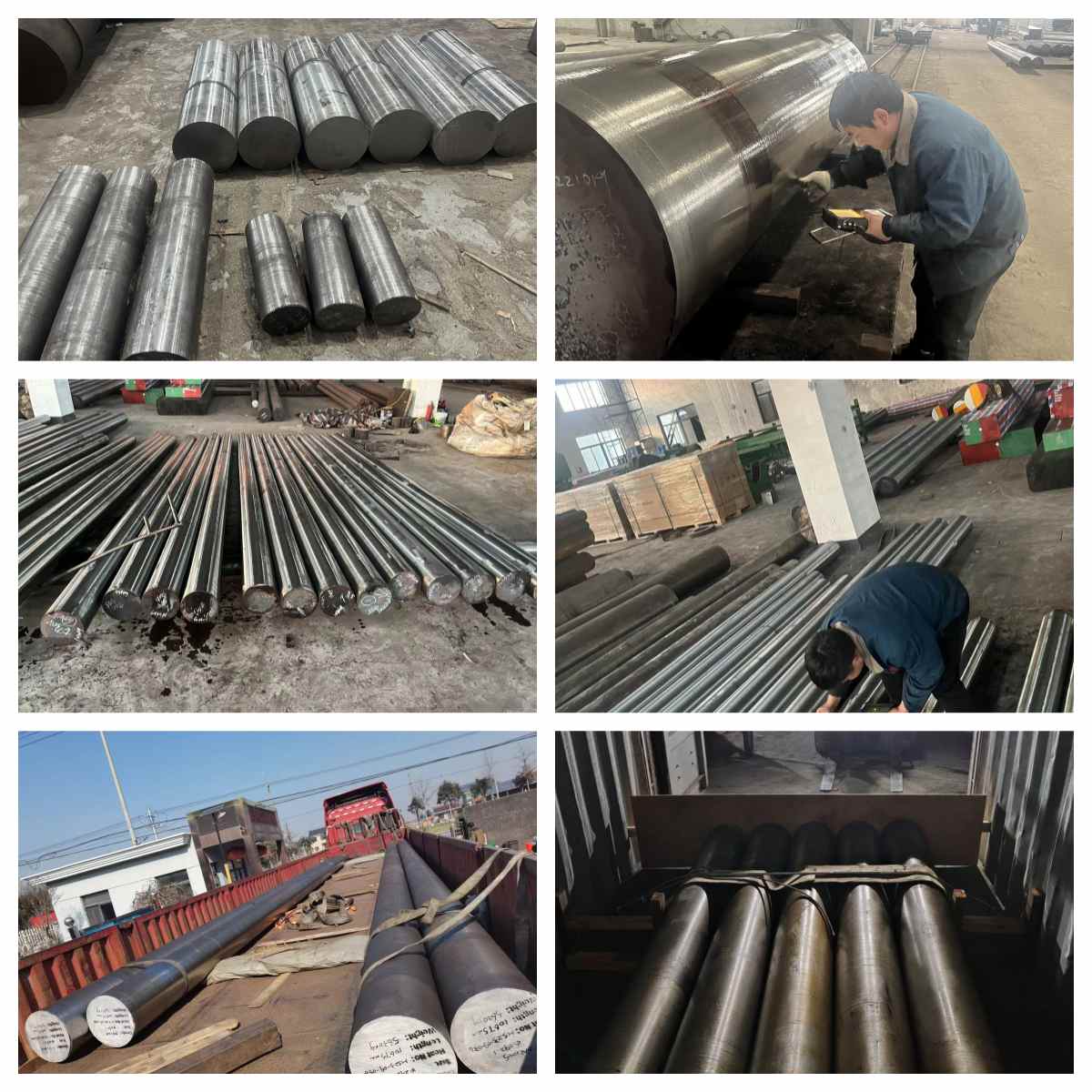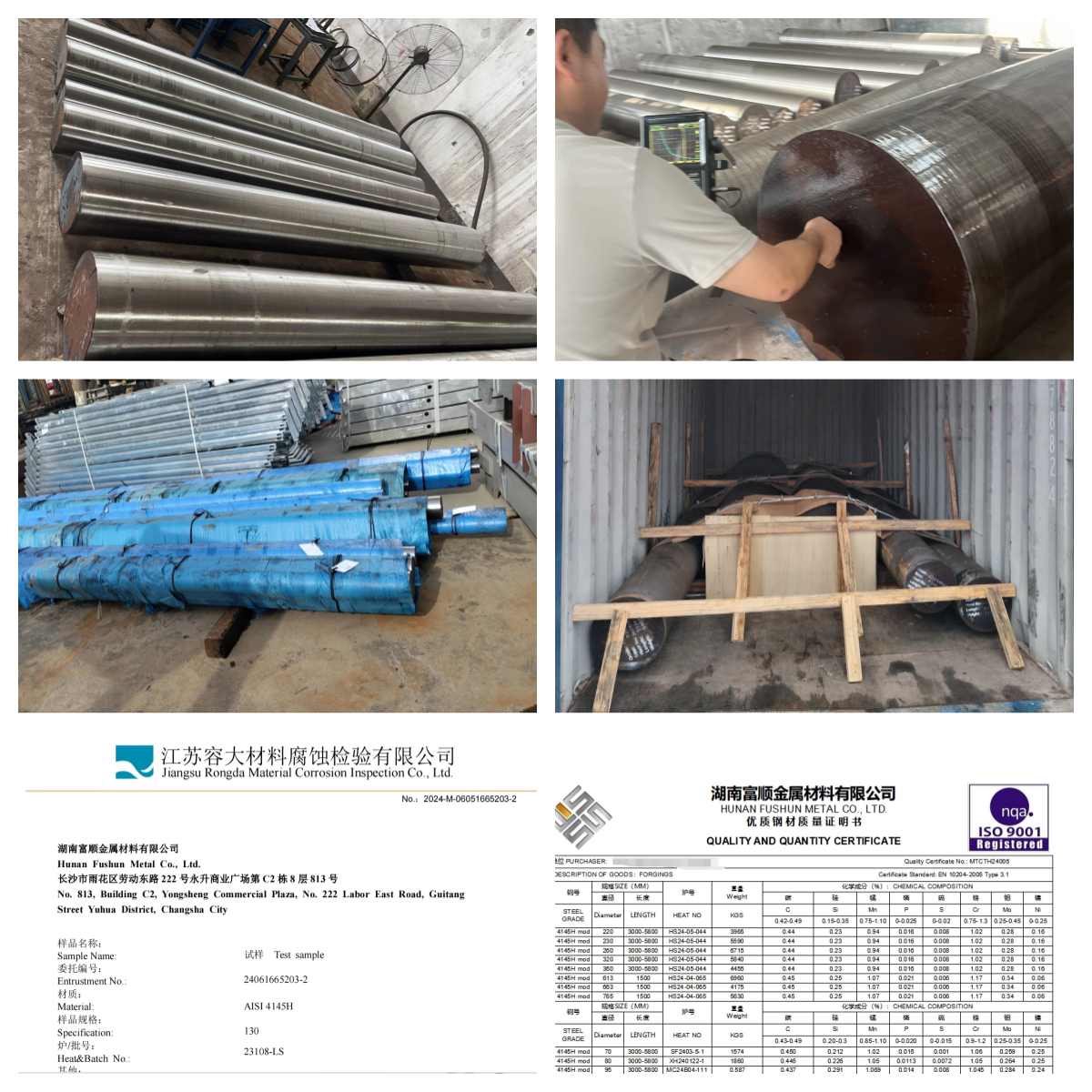Your Content Goes Here
Delivering Excellence: Fulfilling Orders for American Clients
We have supplied a total of 4340 forgings and 1045 forgings, totaling 50 tons, to our American client. These products have been recently delivered to their other facilities for processing. The client has expressed satisfaction with the quality of our forgings, and we are grateful for their trust. We remain committed to providing value to our clients continuously. Should you have any related requirements, please feel free to reach out to our sales engineers.

DESCRIPTION OF GOODS :FORGINGS
| S.R. No. | Commodities Name | Description | Dimensions | QTY | |||
| DIAMETER | LENGTH | PCS | Net Weight | Gross Weight | |||
| (mm) | (mm) | TONS | TONS | ||||
| 1 | FORGINGS | SAE 4340. | 279.4 | 9155 | 2 | 9.29 | 9.29 |
| 2 | SAE 1045 | 292.1 | 10675 | 8 | 45.39 | 45.39 | |
| TOTAL | 10 | 54.68 | 54.68 | ||||
Forging Excellence: Exploring the Attributes of 4340 and 1045 Forgings
Forging, a process of shaping metal through localized compressive forces, stands as a cornerstone in the realm of manufacturing. Among the myriad materials utilized in forging, 4340 and 1045 steels emerge as stalwarts, renowned for their distinct properties and versatile applications.
4340 Steel: Unveiling the Strength
4340 steel, celebrated for its exceptional strength and toughness, finds extensive usage in industries demanding high-performance components. Comprising primarily of iron, carbon, chromium, and molybdenum, this alloy exhibits remarkable hardenability and wear resistance. Its composition, typically around 0.40-0.45% carbon, 0.70-0.90% chromium, 1.65-2.00% nickel, and 0.20-0.30% molybdenum, engenders superior mechanical properties.
Heat treatment plays a pivotal role in enhancing the performance of 4340 forgings. Through processes like quenching and tempering, the steel attains optimal strength, ductility, and toughness. The resulting microstructure, characterized by a tempered martensitic matrix, underscores its suitability for critical applications in aerospace, automotive, and oil & gas industries.
Machining 4340 forgings demands precision and expertise owing to their high hardness. However, the rewards are significant, with finished components exhibiting exceptional fatigue resistance and impact strength.
1045 Steel: Embracing Versatility
In contrast, 1045 steel epitomizes versatility and ease of machining. Comprising primarily of iron and carbon, with nominal amounts of manganese and traces of other elements, this medium-carbon steel strikes a balance between hardness and machinability.
1045 forgings are renowned for their weldability and formability, making them a preferred choice in various manufacturing processes. Its moderate carbon content, typically around 0.45-0.55%, imparts adequate hardness while ensuring machinability without compromising on strength.
Heat treatment of 1045 steel involves processes like annealing, normalizing, or quenching and tempering, depending on the desired properties. These treatments refine the microstructure, enhancing toughness, and improving wear resistance.
Forging Process: Crafting Excellence
Both 4340 and 1045 steels undergo forging, a process that imparts superior grain structure and directional strength to the material. The forging process involves heating the steel to a suitable temperature, followed by shaping it under controlled pressure using dies. This process eliminates internal voids and porosity, ensuring enhanced mechanical properties and structural integrity in the finished components.
The choice of forging method, whether it be open-die or closed-die forging, depends on the complexity of the desired component and the required precision.
Conclusion
In summary, 4340 and 1045 forgings epitomize excellence in the realm of metallurgy and manufacturing. While 4340 steel offers unparalleled strength and toughness suitable for demanding applications, 1045 steel boasts versatility and ease of machining. Through meticulous control of composition, heat treatment, and forging processes, these materials stand as pillars of strength in industries requiring high-performance components. Whether soaring through the skies or powering machines on the ground, the legacy of 4340 and 1045 forgings continues to shape our modern world.

